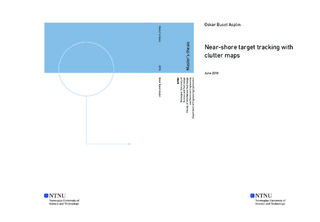| dc.description.abstract | Target tracking is of vital importance for autonomous vehicles moving in areas with unpredictable traffic. The radar is an important sensor in target tracking for autonomous vessels, though, it suffers from occasional false alarms, which may be particularly troublesome near land. Track initiation methods have different approaches to filtering the clutter and detecting true targets among the measurements. Integrated Probabilistic Data Association (IPDA) is a method suitable for both data association and track initiation, though its assumption of uniform clutter is not fully adaptable to many real world situations. Near-shore environments tend to have an uneven clutter distribution at the same time as they are the subject to targets leaving shore, making efficient track initiation a difficult task. Clutter maps attempt to estimate clutter density to assist in the process of selecting or weighting measurements associated with a target.
Three clutter estimators were thoroughly tested and compared, which given some initialization time, improved the efficiency and accuracy of the IPDA in simulations. The Spatial estimator shows the best results for a shorter initialization length of 20 scans, while the Classic and Temporal estimators are able to achieve higher true detection rates when given longer initialization time. The Spatial estimator performs the best in simulated uniform clutter which correlates with its theoretical bias and quick convergence. The tests from real data sets recorded in Trondheimsfjorden suggest that the Classic estimator is most suitable for tracking scenarios where the radar is on board the ownship. For a stationary radar setup, which is more comparable to the simulations in this thesis, the Temporal estimator is a logical choice due to no theoretical bias when given sufficient estimation time. Excluding estimated target measurements from clutter estimation shows a positive effect on track initiation time, and should be tested and explored in further testing of clutter maps. | |

